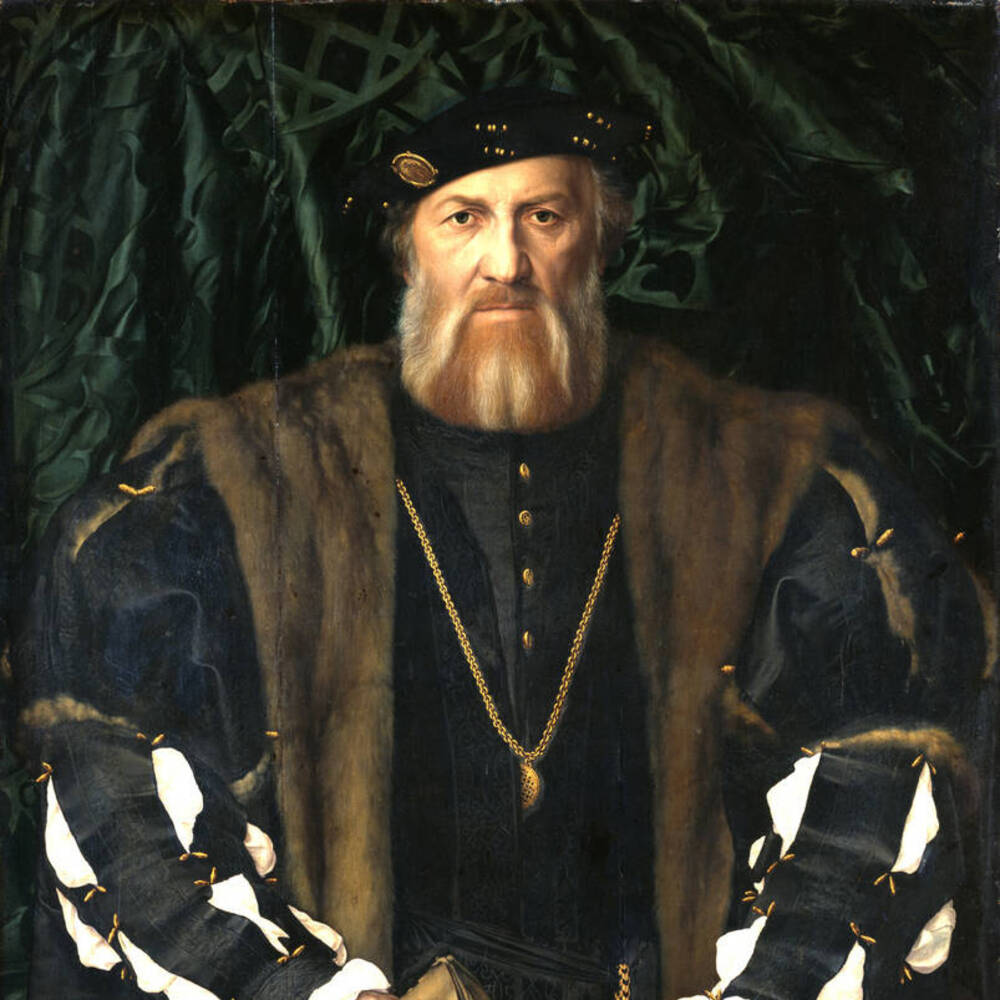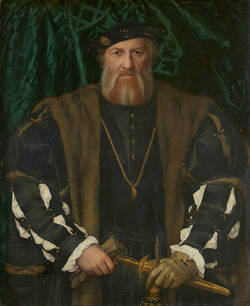Solier, a French military commander and ambassador to England, had his portrait painted by Holbein there. His stern expression and the frontal view emphasise his demonstratively exhibited power. The subject’s fine, opulent clothing and jewellery, depicted in great detail, always indicated that he was a high-status figure. This painting was purchased as a work by Leonardo da Vinci before Holbein was recognised as the author. Likewise, the sitter was not identified as Solier until 1881.
Further Media




It’s quite something to own a work painted by Holbein. But when August the Strong bought this painting in 1746, he believed it was by a very different artist – namely, Leonardo da Vinci. This was thought to be Leonardo’s portrait of Ludovico Sforza, Duke of Milan. Only much later did art historians realise this portrait was by Holbein and the figure was a French diplomat.
It’s no coincidence this discovery dates from the nineteenth century, since then art historians began applying scientific methods to investigate art works. They also became interested in provenance research, tracing the chains of owners of a painting before it entered a museum collection. And art experts started to study in detail painting styles, brushwork, and so on, and compare their results. In the best case, this allowed an artist to be identified even if a painting was not signed. Such research was greatly helped by the invention of photography in the first half of the nineteenth century. Thanks to photography, it became feasible to compare paintings directly even if they were in collections hundreds of miles apart. Previously, art historians had to rely solely on their own memory and drawings or prints of works.
Holbein presents Charles de Solier, a high-ranking diplomat, in exceptionally elegant clothes. He is wearing a doublet with four golden buttons. Each button is decorated twice with the monogram ‘M’ – a reference to de Solier’s noble background. He bore the title ‘Comte de Morette’ – the equivalent of a count. Over his doublet, he has an overgown of black leather and as a third layer, a chamarre, an unbelted coat with very wide arms. The puff sleeves were held together with little cords or laces, often with metal fittings at the end making it easier to slip them through the corresponding holes. In keeping with de Solier’s high status, the metal fittings on his sleeve laces are made of gold.
The fur lining of his chamarre is also an indication of his rank, since when this portrait was painted, only the highest classes in society were allowed to wear fur. De Solier’s aristocratic outfit is completed by his beret-style cap. Today, thanks to images of Che Guevara, a beret like this is more associated with revolution, but in the sixteenth century it stood for erudition and learning.
- Location & Dating
- 1534/35
- Material & Technique
- Oil on oak panel
- Dimenions
- 92,5 x 75,5 cm
- Museum
- Gemäldegalerie Alte Meister
- Inventory number
- Gal.-Nr. 1890